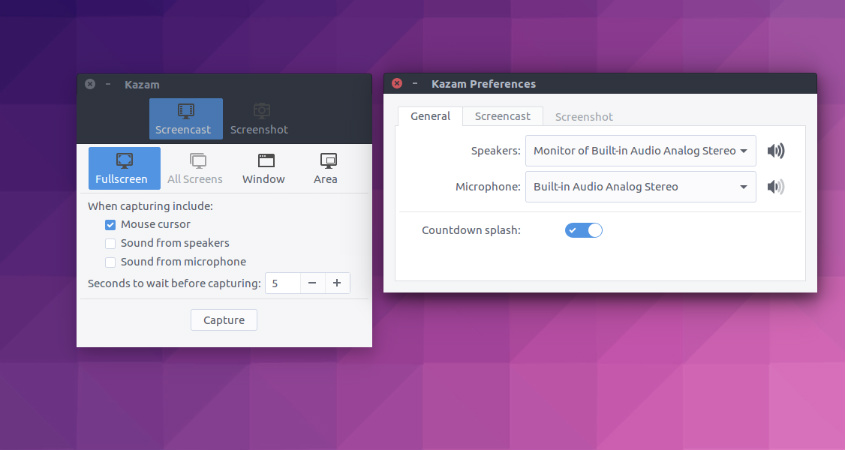How to install Kazam on Ubuntu 16.10 and Ubuntu 16.04 Systems. Kazam screencaster or Kazam video recorder is a screen recording and screenshot tool for Linux. Kazam is a simple screen recording program that will capture the content of your screen and record a video file that can be played by any video player that supports VP8/WebM video format. Optionally you can record sound from any sound input device that is supported and visible by PulseAudio.

The Kazam desktop screen recorder is also released under the Gnu Public License and, like SimpleScreenRecorder, it is easy to use and offers an intuitive interface. After you install and launch the program, you can configure it to capture the whole desktop, a specific window, or a select area. Recording a select area of a screen can come in handy because it focuses the learner’s attention on exactly where you want them to look. You can capture the mouse pointer movement, too. I like that Kazam also has the ability to delay the capture, which can come in useful when recording tutorials.
Download Kazam On Ubuntu
Kazam is from now on available from Ubuntu Universe repository. Stable PPA is provided for convenience only, so you don’t have to wait for latest releases to show in Ubuntu repositories.
- Stable PPA – https://launchpad.net/~kazam-team/+archive/stable-series
- Unstable PPA – https://launchpad.net/~kazam-team/+archive/unstable-series
Install Kazam On Ubuntu
Ubuntu users can install the stable release of Kazam screencaster application on Ubuntu Systems via the following commands:
sudo add-apt-repository ppa:kazam-team/stable-series
sudo apt-get update
sudo apt-get install kazam
Once installed, open Kazam from Ubuntu Dash or Terminal.
You will see that the UI is very basic, but has all the necessary elemsnts to screencast and record Ubuntu Desktop screen. You can configure preferences from the Preferences menu under the File menu option. Users can also specify the audio sources to include speakers and microphone.
The second tab of preferences window is for selecting video preferences, including frame rate and video formats. The default video settings for recording screencasts is H264(MP4) using the automatic file saving feature enabed by default. Users can also configure and select the directory to save the file.
